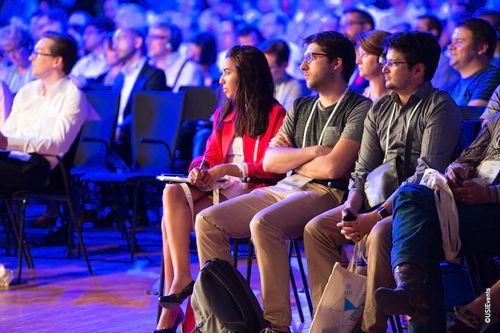Interview Jon Kolko : "Design should be a liberal art"
Jon Kolko is well-known for his expertise in Design Thinking and will tell us all about it during his talk "Well-Designed: How to use Empathy to Create Products People Love", at USI.
In the mean time, we wanted to learn more about his vision of Design Thinking and the way this methodology should be applied. Digging a little deeper, we also asked him how his childhood had affected his work as an adult...
Meet Jon Kolko!

What's design thinking's great strength?
Design is about painting a picture of an optimistic future, and then realizing that future. By making things, people can see how the world might be, and can dedicate their efforts to making positive change.
How can you go about using the methodology? Can it be applied to any issue, any concept? Or there are specific markers within a project that betray the need for design thinking?
Design is a process of building empathy through immersive research, synthesis through interpretation, and making things. This is a process that focuses on people at each step. The process of design is flexible; it’s something that can be applied in any context, in any subject matter.
What do you think the future holds for this type of method? What have you already begun working on?
The future of design should be the spread of non-linear, visual, empathetic thinking in education. Design should be a liberal art, something that is broadly accessible like reading or writing.
Design thinking is becoming very popular in France and everyone wants to use it. Do you think that by democratizing design thinking we risk distorting it?
I don’t really know what design thinking is. For me, there is just design; it’s a way of thinking, and a way of making. Doing the “thinking” part is often alluring because it’s approachable, and that’s a good thing. It changes the way you look at the world, and methods for divergent, creative thinking can be (and should be) taught to just about anyone. But the act of making things takes time to learn. It’s something that, again, everyone should be able to do; but it is not something everyone can do without years of practice. We should strive to democratize design, and recognize that, like anything else, you get better at something with practice. Big, nasty design problems should probably be approached by people with more experience than small, tame problems.
What do you wish you had known when you were younger that would have benefitted you as an adult?
I had a pretty wild childhood – I did a lot of things that, maybe, you aren’t supposed to do. Yet I wish I had done more, explored more, and acted even more crazy. You build on who you were, and the more you reject the status quo, the more you realize the power you have to change the world around you .
Had you heard about USIEvents before ? What are you hoping to take away from your first experience at USI?
No, not before François invited me. The tagline for the conference is “Unexpected sources of inspiration”, and I look forward to experiencing that serendipity. I’m sure I will find it at the conference. Additionally, while I’ve been to France before, I’ve never explored the city in depth. I hope to get lost in France for a brief period of time during this trip.
Who you would love to see at USI this year, or in the years to come?
I don’t know yet!
Read more :
-Interview Karen McGrane : "UX design practices apply to content just as much as they do to interfaces"

